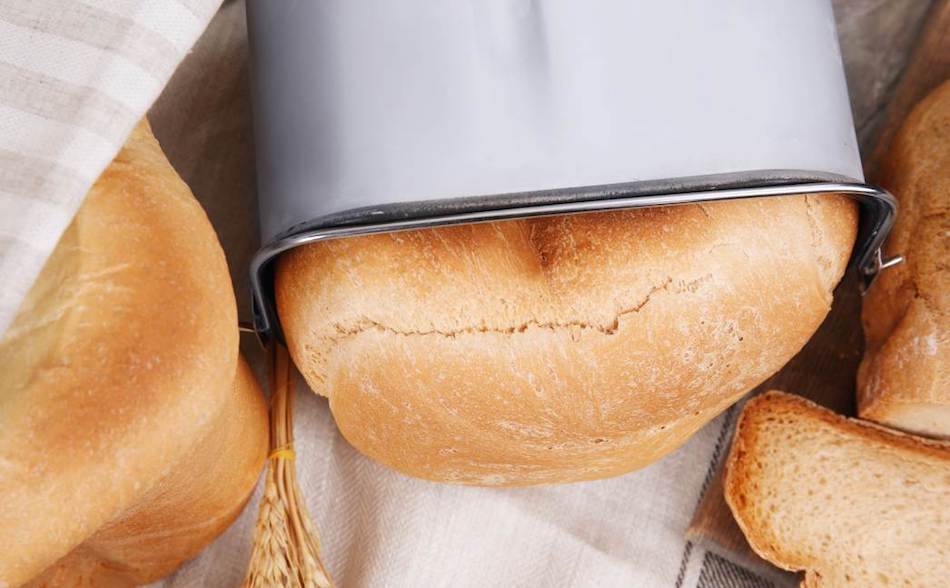
Sourdough bread is known for its distinct flavor, chewiness, and airiness, but one of the most important characteristics of a good sourdough bread is its crispy crust. Achieving a crispy crust on sourdough bread can be challenging, especially when using a bread machine. Bread machines tend to trap steam inside, which can make it difficult to achieve the desired crispiness on the crust. In this article, we will explore the challenges of achieving a crispy crust on sourdough bread when using a bread machine, and provide tips and tricks for overcoming these challenges.
One of the biggest challenges in baking sourdough bread in a bread machine is achieving a crispy crust. Bread machines trap steam inside, which can make it difficult to achieve the desired crispiness on the crust. Other issues that may arise include over-fermenting, inconsistent rise, difficulty achieving the desired texture, difficulty incorporating the sourdough starter, difficulty with shaping and scoring, and difficulty with timing. These challenges can be overcome by adjusting the recipe, using techniques and tools to vent steam, incorporating a pre-bake or “bake-off” step, using a Dutch oven, scoring and shaping the dough, using a baking stone or steel, and paying attention to temperature and timing.
Key Points
- Incorporating a pre-bake step
- Adjusting the recipe
- Using a Dutch oven
- Incorporating a steam-generating method
- Scoring the dough using a bread lame or razor blade
- Using a baking stone or steel
- Dough age and fermentation
- Altitude and humidity
- Oils and butter
- Resting and cooling the bread
- Experimentation and monitoring the bread while baking to find the right balance for specific bread machine and preferences.
| Techniques | Description |
|---|---|
| Incorporating a pre-bake step | Adding a pre-bake step before putting the bread in the bread machine can help achieve a crispy crust. |
| Adjusting the recipe | Adjusting the recipe to include more flour or less water can help achieve a crispy crust. |
| Using a Dutch oven | Using a Dutch oven to bake the bread can help achieve a crispy crust. |
| Incorporating a steam-generating method | Incorporating a method of generating steam such as using ice cubes, a steam generator or a spray bottle to add moisture to the crust can help achieve a crispy crust. |
| Scoring the dough using a bread lame or razor blade | Making precise cuts on the dough before baking can help the steam to escape and create a crispy crust. |
| Using a baking stone or steel | Using a baking stone or steel can help to enhance crust crispiness by allowing the bread to come into direct contact with the heat source. |
| Dough age and fermentation | Finding the right balance of fermentation and rising times can help achieve a crispy crust. |
| Altitude and humidity | Adjusting the recipe to account for the altitude and humidity of your location can help achieve a crispy crust. |
| Oils and butter | Using oils and butter can create a barrier on the surface of the dough, preventing it from absorbing moisture and help to maintain a crispy crust. |
| Resting and cooling the bread | Allowing the bread to cool down before cutting into it and resting it for a certain amount of time can help to maintain the crust crispiness and develop a better flavor and texture. |
The Importance of a Crispy Crust in Sourdough Bread
The crispy crust is the crowning glory of a perfect sourdough loaf. It’s the first thing you’ll notice when you sink your teeth into that warm, freshly baked bread, and it sets the tone for the entire experience. A crispy crust is the mark of a bread that’s been expertly crafted, with the perfect balance of moisture and heat. But, let me tell you, achieving that crispy crust can be a real challenge, especially when you’re using a bread machine.
These machines trap steam inside, which can make it difficult to achieve that desirable crispiness. But, I’m here to tell you that it’s not impossible. With the right recipe adjustments, techniques and tools, you can create a sourdough bread with a crispy crust that will make your taste buds sing. So, roll up your sleeves and get ready to bake, because we’re going to make some bread that will blow your mind.
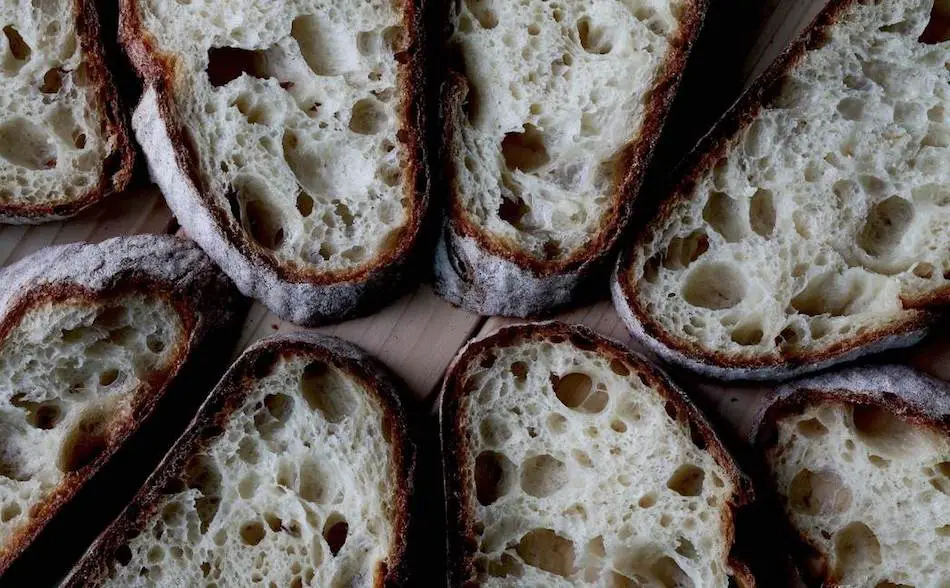
Why Bread Machines Can Be Challenging for Achieving a Crispy Crust
Bread machines, let me tell you, can be a real challenge when it comes to achieving that crispy crust on your sourdough bread. See, these machines are designed to trap steam inside, which is great for getting that perfect rise and texture, but it can be a real problem when it comes to creating a crispy crust.
The steam that’s trapped inside makes it difficult for the crust to dry out and develop that desirable crispiness. It’s like trying to fry an egg in a sauna. It’s just not going to happen. But, that’s not to say that it’s impossible. With the right adjustments to your recipe and techniques, you can still achieve that crispy crust, but it takes a bit more effort and know-how. But, I guarantee you, when you take that first bite of a sourdough loaf with a crispy crust that you created in a bread machine, it will be worth it.
So, don’t give up on your bread machine just yet, let’s figure out how to make it work for us.
The Role of Steam in Bread Making and How it Affects the Crust
Steam plays a crucial role in bread making and has a direct impact on the crust of the bread. During baking, the heat causes the water in the dough to turn into steam which helps to raise the bread and create a light and airy texture.
The steam also helps to create a crisp crust by evaporating the surface moisture of the dough as it bakes. This process causes the surface of the bread to dry out and form a hard, dry surface that’s necessary for a crisp crust. The amount of steam, its timing and how long it is trapped in the oven all play a role in the final crust.
Too much steam can prevent the crust from forming a hard, dry surface, resulting in a soft and chewy crust. On the other hand, too little steam can cause the crust to over-dry and burn. Therefore, it is important to have the right balance of steam in the oven, which can be achieved by using a steam generating method such as using a wet cloth or a spray bottle on the dough before baking, or using a Dutch oven to trap the steam inside while baking.
It is important to note that when using a bread machine, the steam is trapped inside the machine which can make it difficult to achieve a crispy crust. However, with the right adjustments and techniques, it is possible to achieve a crispy crust even in a bread machine.
Adjusting the Recipe for a Crispy Sourdough Bread Machine Loaf
Adjusting the recipe for a crispy sourdough bread machine loaf is one of the key ways to achieve the desired crust. Here are a few recipe adjustments that can help:
- Hydration: Increasing the hydration of the dough can result in a crispier crust. A higher hydration dough will have more water, which will evaporate during baking, resulting in a drier surface and a crispier crust.
- Fat: Adding fats like butter or oil to the dough can also help to create a crispier crust. The fats will help to create a barrier between the surface of the dough and the trapped steam, which will help to prevent the crust from becoming too soft.
- Sugar: Adding sugar to the dough can also help to create a crispier crust. Sugar helps to caramelize the surface of the bread, which can create a harder, dryer surface that’s necessary for a crisp crust.
- Pre-bake: A pre-bake or “bake-off” step can also help to create a crispier crust. This step involves baking the dough in a preheated oven for a short period of time before placing it in the bread machine. This helps to dry out the surface of the dough and create a hard, dry surface that’s necessary for a crisp crust.
- Scoring: Scoring the dough before baking can also help to achieve a crispier crust. This allows steam to escape the bread during baking, which helps to prevent the crust from becoming too soft.
It’s important to note that these adjustments may require some experimentation to find the right balance for your specific bread machine and your preferences. Also, it’s important to monitor the bread while it’s baking to make sure that it does not over-bake or burn.
Techniques for Venting Steam in a Bread Machine
Venting steam is an important technique for achieving a crispy crust when baking sourdough bread in a bread machine. Here are a few techniques that can be used to vent steam:
- Punching down the dough: Before placing the dough in the bread machine, punch it down to release any trapped air. This will also help to release some of the steam that’s generated during the rising process.
- Scoring the dough: Scoring the dough before baking can also help to release steam. This allows the steam to escape the bread during baking, which can prevent the crust from becoming too soft.
- Use of Dutch oven: Using a Dutch oven to bake the bread can trap the steam inside, creating a humid environment that helps the bread to rise and develop a crispy crust.
- Creating steam in the oven: Creating steam in the oven by adding a tray of water or using a spray bottle can also help to create a crispy crust. The steam will help to create a hard, dry surface on the crust, which is necessary for a crisp crust.
- Using a bread pan with vents: Using a bread pan with vents allows the steam to escape while the bread is baking, which can help to achieve a crispier crust.
- Using a bread machine with a special crust settings, some bread machines have a special crust setting that allows you to adjust the crust color, this can help you to achieve the desired crispiness of the crust.
The Use of a Dutch Oven for Achieving a Crispy Crust in Bread Machine Sourdough
The use of a Dutch oven is a popular technique for achieving a crispy crust when baking sourdough bread in a bread machine. A Dutch oven is a heavy pot with a tight-fitting lid that can be used for both stovetop and oven cooking. When used for baking bread, the Dutch oven creates a humid environment that helps to trap steam inside, which can result in a crispy crust.
To use a Dutch oven for baking bread, preheat the Dutch oven in the oven before placing the dough inside. Once the dough is in the pot, put the lid on and place it back in the oven. The trapped steam will help to create a humid environment that will allow the bread to rise and develop a crispy crust.
It’s important to note that the Dutch oven must be preheated before placing the dough inside, and the lid should be kept on for the entire baking process, this will ensure that the steam is trapped and the bread will rise and the crust will develop the desired crispiness.
Also, the size of the Dutch oven should match the size of the bread you are making, if the dough is too large for the Dutch oven, it will not rise properly and the crust will not be as crispy as desired.
It’s important to note that this technique may require some experimentation to find the right balance for your specific bread machine and your preferences. Also, it’s important to monitor the bread while it’s baking to make sure that it does not over-bake or burn.
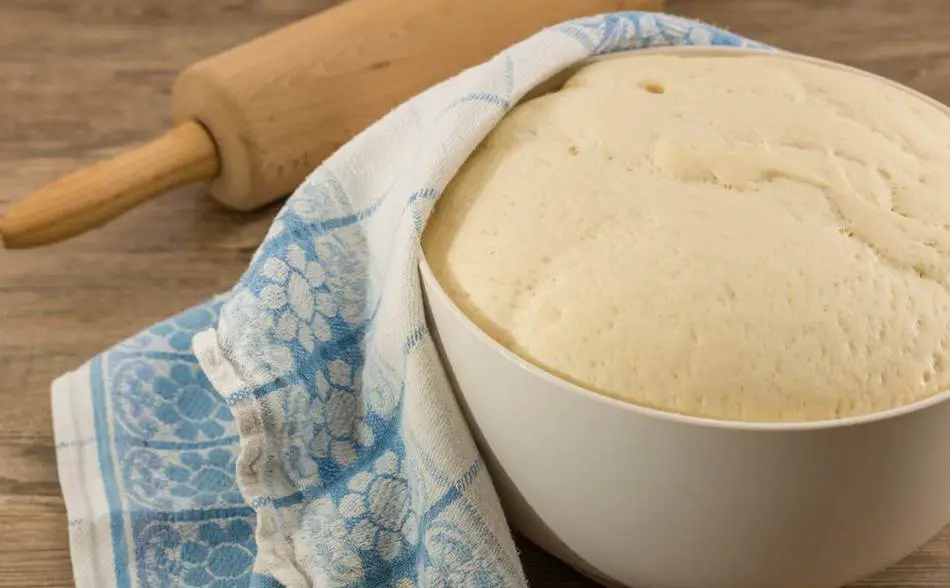
Incorporating a Pre-Bake or ‘Bake-Off’ Step for a Crispy Crust
A pre-bake or “bake-off” step is a great technique for achieving a crispy crust when baking sourdough bread in a bread machine. It’s like giving your bread a head start before it goes into the bread machine.
This step involves baking the dough in a preheated oven for a short period of time before placing it in the bread machine. This helps to dry out the surface of the dough and create a hard, dry surface that’s necessary for a crisp crust.
Think of it like this, when you’re roasting a chicken, you sear it first to get that nice golden crust, right? Well, it’s the same principle with bread. By pre-baking the dough, you’re giving it that initial burst of heat that’s going to create a crispy crust. And trust me, the difference it makes is astounding. The bread will come out of the bread machine with a crust that’s so crisp it’ll make your teeth ache, but in a good way.
But, be careful not to over-bake the dough during the pre-bake step or the bread will be dry and not as flavorful. Also, make sure that the dough is properly scored before pre-baking to allow steam to escape, this will prevent the bread from puffing up during the pre-bake step.
Incorporating a pre-bake or “bake-off” step may take a bit of experimentation to find the right balance for your specific bread machine and your preferences, but trust me when I say, it’s worth the effort for that crispy crust.
The Impact of Flour Type and Hydration on Crust Crispiness
The type of flour and the hydration level of the dough can have a significant impact on the crispiness of the crust when baking sourdough bread in a bread machine.
First, let’s talk about flour. The type of flour you use can affect the texture of the crust. For example, using a flour with a high protein content such as bread flour will result in a crust that’s more firm and crisp. On the other hand, using a flour with a lower protein content such as all-purpose flour will result in a softer crust.
Now, let’s talk about hydration. The hydration level of the dough refers to the amount of water used in relation to the amount of flour. The higher the hydration level, the wetter the dough will be. A higher hydration dough will have more water, which will evaporate during baking, resulting in a drier surface and a crispier crust. However, be careful not to overdo the hydration, as it can make the dough too sticky and difficult to handle.
So, when it comes to flour and hydration, it’s all about finding the right balance. Experiment with different flour types and hydration levels to find the combination that produces the crispiest crust for your specific bread machine and your preferences. And trust me, when you find that perfect combination, the results will be astounding.
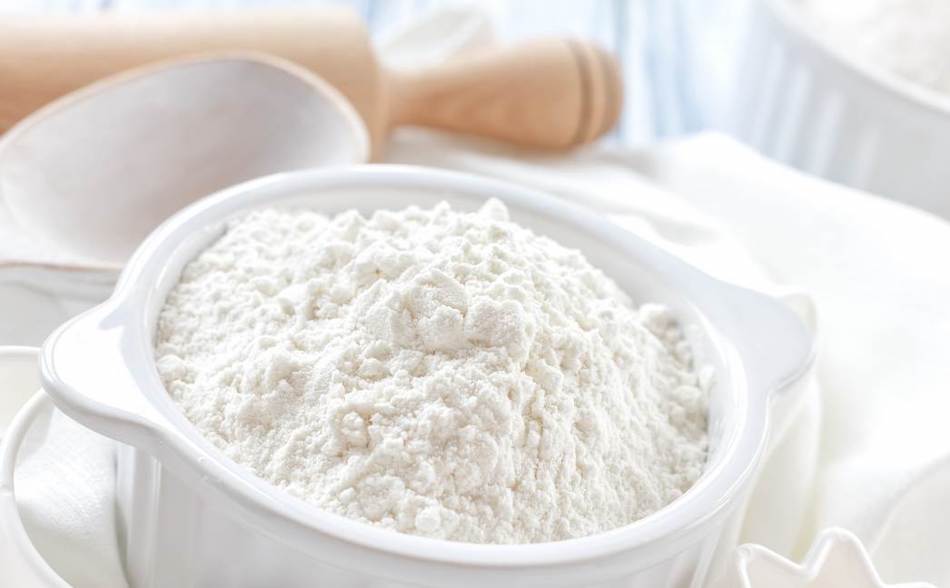
Using a Spray Bottle or Brush to Add Moisture to the Crust
Using a spray bottle or brush to add moisture to the crust is a technique that can help to achieve a crispier crust when baking sourdough bread in a bread machine. The idea behind this technique is to add a small amount of moisture to the surface of the dough before baking, which will help to create steam in the oven. This steam will help to create a hard, dry surface on the crust, which is necessary for a crisp crust.
When using a spray bottle, fill it with water and mist the surface of the dough just before placing it in the bread machine. Be careful not to over-mist, as too much moisture can make the crust too soft.
When using a brush, dip it in water and gently brush the surface of the dough just before placing it in the bread machine. Again, be careful not to over-moisten the dough, as it can affect the final texture and taste of the bread.
It’s important to note that when using this technique, it’s crucial to monitor the bread while it’s baking to make sure that it does not over-bake or burn. This technique may require some experimentation to find the right balance for your specific bread machine and your preferences.
The Importance of Scoring and Shaping for a Crispy Crust
Scoring and shaping are crucial techniques when it comes to achieving a crispy crust when baking sourdough bread in a bread machine. Scoring refers to the act of cutting slits into the surface of the dough before baking.
This allows the steam to escape the bread during baking, which can prevent the crust from becoming too soft. The shape of the loaf also plays a role, as certain shapes such as a boule or batard allow for more surface area for crust development.
When it comes to scoring, the key is to make sure that the cuts are deep enough to allow the steam to escape but not so deep that they affect the structural integrity of the bread. A good rule of thumb is to score the dough about ¼ inch deep.
As for shaping, the key is to create a loaf with a smooth surface, this will allow for a more even crust development. When shaping the dough, be sure to remove any excess flour, and if the dough is too sticky, dust it lightly with flour.
It’s important to note that these techniques may require some experimentation to find the right balance for your specific bread machine and your preferences. Also, it’s important to monitor the bread while it’s baking to make sure that it does not over-bake or burn.
But trust me, when it comes to scoring and shaping, the little extra effort you put in will pay off in the form of a crispy and delicious crust. It’s all about the details, and these two steps are crucial in creating a perfect loaf of bread.
The Role of Temperature and Timing in Achieving a Crispy Crust
Temperature and timing play a crucial role in achieving a crispy crust when baking sourdough bread in a bread machine.
The temperature of the bread machine should be hot enough to properly bake the bread, but not so hot that it burns the crust. A good rule of thumb is to preheat the bread machine to the temperature recommended in the recipe or the manual. It’s also important to monitor the bread while it’s baking to make sure that it doesn’t over-bake or burn.
Timing is also crucial in achieving a crispy crust. The bread should be baked for the right amount of time to ensure that the crust is crisp, but not burnt. It’s important to check the bread for doneness about 10 minutes before the end of the baking cycle. A good rule of thumb is to tap the bottom of the loaf, if it sounds hollow then it’s done.
It’s important to note that these adjustments may require some experimentation to find the right balance for your specific bread machine and your preferences. Also, it’s important to monitor the bread while it’s baking to make sure that it does not over-bake or burn.
But trust me, when it comes to temperature and timing, a little extra attention can make a huge difference in the crispiness of the crust. It’s all about getting the timing and temperature just right, and that’s what separates the good bread from the great bread.
The Use of a Bread Lame or Razor Blade for Scoring the Dough
The use of a bread lame or razor blade is a great technique for scoring the dough when baking sourdough bread in a bread machine. A bread lame is a tool that’s specifically designed for scoring bread dough, it has a handle and a blade that is sharpened at an angle to make precise cuts. A razor blade can also be used but it must be sharp and handled with care.
When using a bread lame or razor blade, the key is to make sure that the cuts are deep enough to allow the steam to escape but not so deep that they affect the structural integrity of the bread. A good rule of thumb is to score the dough about ¼ inch deep.
It’s important to note that the scoring should be done just before placing the bread in the bread machine, this will ensure that the cuts remain open during the baking process and allow the steam to escape.
It’s also important to note that the scoring pattern is a matter of personal preference, some people prefer a simple straight line, while others prefer more intricate patterns. Experiment with different patterns and find the one that you like best.
Using a Baking Stone or Steel to Enhance Crust Crispiness
Using a baking stone or steel is a great technique for enhancing crust crispiness when baking sourdough bread in a bread machine. A baking stone is a thick, flat piece of stone or ceramic that’s placed in the oven to absorb and radiate heat.
A baking steel is a thick piece of steel that serves the same purpose. By placing the bread on the baking stone or steel, the crust comes into direct contact with the heat source which can enhance the crust crispiness.
To use a baking stone or steel, preheat it in the oven before placing the bread on it. Once the bread is on the stone or steel, you can add some steam to the oven by adding a tray of water or using a spray bottle. This will help to create a humid environment that will allow the bread to rise and develop a crispy crust.
It’s important to note that the baking stone or steel should be preheated in the oven before placing the bread on it, this will ensure that the bread is exposed to the right amount of heat. Also, it’s important to monitor the bread while it’s baking to make sure that it does not over-bake or burn.
The Impact of Dough Age and Fermentation on Crust Crispiness
The age and fermentation of the dough can have a significant impact on the crispiness of the crust when baking sourdough bread in a bread machine.
Dough age refers to the amount of time that the dough has fermented or risen. The longer the dough ferments, the more complex the flavor and aroma of the bread will be. However, over fermentation can result in a softer crust, so it’s important to monitor the fermentation and shape the dough before it rises too much.
Fermentation is the process by which yeast and bacteria consume sugars and starches in the dough, producing carbon dioxide and alcohol. The proper fermentation is crucial for the crust and the final texture of the bread, as well as the flavor. It’s important to monitor the fermentation and shape the dough before it rises too much.
When it comes to dough age and fermentation, it’s all about finding the right balance. Experiment with different fermentation and rising times to find the combination that produces the crispiest crust for your specific bread machine and your preferences. And trust me, when you find that perfect balance, the results will be astounding.
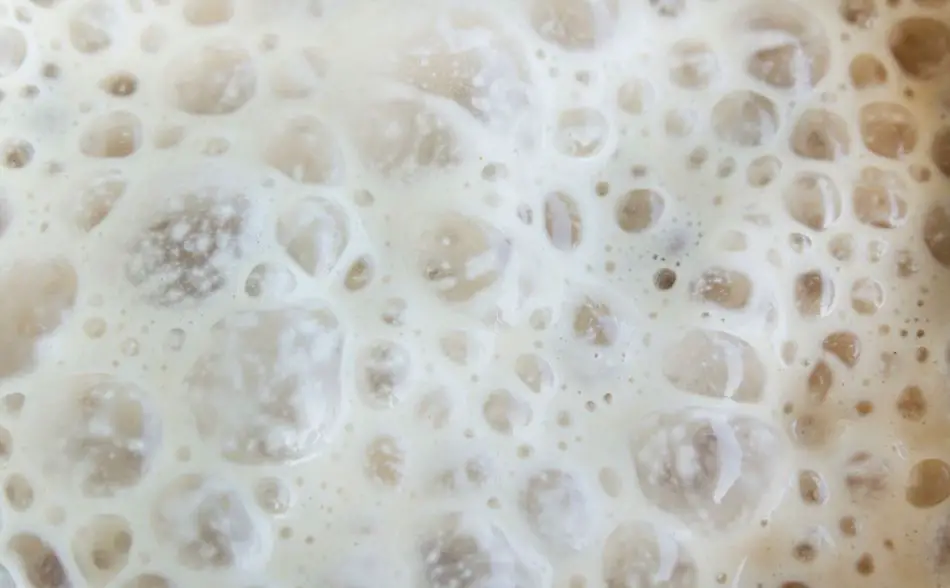
The Use of Ice Cubes or Steam Generators for Crust Crispiness
The use of ice cubes or steam generators is a technique that can help to achieve a crispier crust when baking sourdough bread in a bread machine. The idea behind this technique is to add steam to the oven, which can help to create a humid environment that will allow the bread to rise and develop a crispy crust.
When using ice cubes, place them on a baking tray or in a cast iron skillet and place them in the oven before you add the bread. As the ice melts, it will create steam, which can help to create a humid environment that will allow the bread to rise and develop a crispy crust.
When using a steam generator, it’s a small device that can be added to the oven, it’s filled with water and it will release steam when the oven is heated up, this will also help to create a humid environment that will allow the bread to rise and develop a crispy crust.
It’s important to note that when using this technique, it’s crucial to monitor the bread while it’s baking to make sure that it does not over-bake or burn. This technique may require some experimentation to find the right balance for your specific bread machine and your preferences.
Bread Machine Sourdough vs. Hand-Made Sourdough: Achieving a Crispy Crust
Baking sourdough bread in a bread machine can be challenging when trying to achieve a crispy crust, as compared to hand-made sourdough bread. The main difference is that bread machines tend to trap steam inside, which can make it difficult to achieve the crispy crust that is often desired in sourdough bread.
When making hand-made sourdough bread, bakers have more control over the fermentation process, the shaping, and the scoring of the dough which can lead to a better crust development. Additionally, bakers have more control over the baking process, they can use a Dutch oven, a baking stone, or place the bread on a baking sheet, all of which can help to create a crispy crust.
On the other hand, bread machines are designed to make the bread-making process more convenient and hands-off, but they limit the control that bakers have over the fermentation process, the shaping, and the scoring of the dough, as well as the baking process.
However, it’s important to note that with some adjustments and techniques, it’s possible to achieve a crispy crust when baking sourdough bread in a bread machine. Techniques like incorporating a pre-bake step, adjusting the recipe, using a Dutch oven, and incorporating a steam-generating method can all help to enhance the crust crispiness.
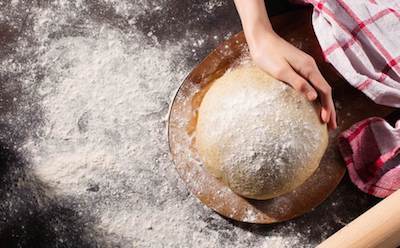
The Impact of Altitude and Humidity on Crust Crispiness
Altitude and humidity can have an impact on the crispiness of the crust when baking sourdough bread in a bread machine.
At higher altitudes, the air pressure is lower and the boiling point of water is lower, which can affect the way the bread rises and bakes. At high altitudes, the dough may need to be adjusted to account for the lower air pressure and the lower boiling point of water. This can include using more yeast or allowing for a longer fermentation time.
In terms of humidity, the humidity levels of your kitchen can affect the final texture and crust of the bread. When the humidity is low, the dough will dry out faster, resulting in a harder crust. However, when the humidity is high, the dough will stay wetter, resulting in a softer crust.
For example, if you live in a dryer climate, you may need to add more moisture to the dough to help it rise and develop a crispy crust. On the other hand, if you live in a more humid climate, you may need to adjust the recipe to account for the higher humidity, for example, by using less water in the dough.
It’s important to note that these adjustments may require some experimentation to find the right balance for your specific location and your preferences. Also, it’s important to monitor the bread while it’s baking to make sure that it does not over-bake or burn.
The Role of Oils and Butter in Enhancing Crust Crispiness
The use of oils and butter can be a technique that can help to enhance crust crispiness when baking sourdough bread in a bread machine. The fats in oils and butter can create a barrier on the surface of the dough that prevents it from absorbing moisture, which can help to maintain a crispy crust.
When using oils or butter, they can be brushed on the surface of the dough before baking, or they can be added to the dough itself. It’s important to note that when adding oil or butter to the dough, it can affect the final texture and taste of the bread, so it’s important to adjust the recipe accordingly.
Different types of oils and butter can also be used to achieve different results. For example, olive oil can add a fruity and pungent flavor to the bread, while butter can add a rich and creamy flavor.
It’s important to note that when using this technique, it’s crucial to monitor the bread while it’s baking to make sure that it does not over-bake or burn. This technique may also require some experimentation to find the right balance for your specific bread machine and your preferences.
But trust me, when it comes to enhancing crust crispiness, the use of oils and butter can make a huge difference. The fats in oils and butter can create a barrier on the surface of the dough, maintaining a crispy crust and adding a delicious flavor to the bread.
The Importance of Resting and Cooling the Bread for a Crispy Crust
Resting and cooling the bread is an important step in achieving a crispy crust when baking sourdough bread in a bread machine.
When the bread comes out of the oven, it’s important to let it cool down before cutting into it. The cooling process allows the bread to finish cooking, and the moisture inside to be redistributed. This can prevent the crust from becoming soggy and help to maintain a crispy crust.
During the cooling process, the bread should be placed on a wire rack, this allows the air to circulate around the bread and cool it down evenly. It’s important to avoid placing the bread in a closed container or plastic bag, as this can trap the steam and make the crust soggy.
Resting the bread is also an important step, it allows the bread to develop a better flavor and texture. When the bread is allowed to rest for a certain amount of time, the gluten in the dough will relax and the bread will be easier to slice. It will also help to maintain the crust crispiness.
It’s important to note that the resting and cooling time may vary depending on the size and shape of the loaf, the type of flour and recipe used, and the humidity and temperature of the kitchen.
But trust me, when it comes to resting and cooling the bread, the little extra effort you put in will pay off in the form of a crispy and delicious crust. It’s all about the details, and these two steps are crucial in creating a perfect loaf of bread.


